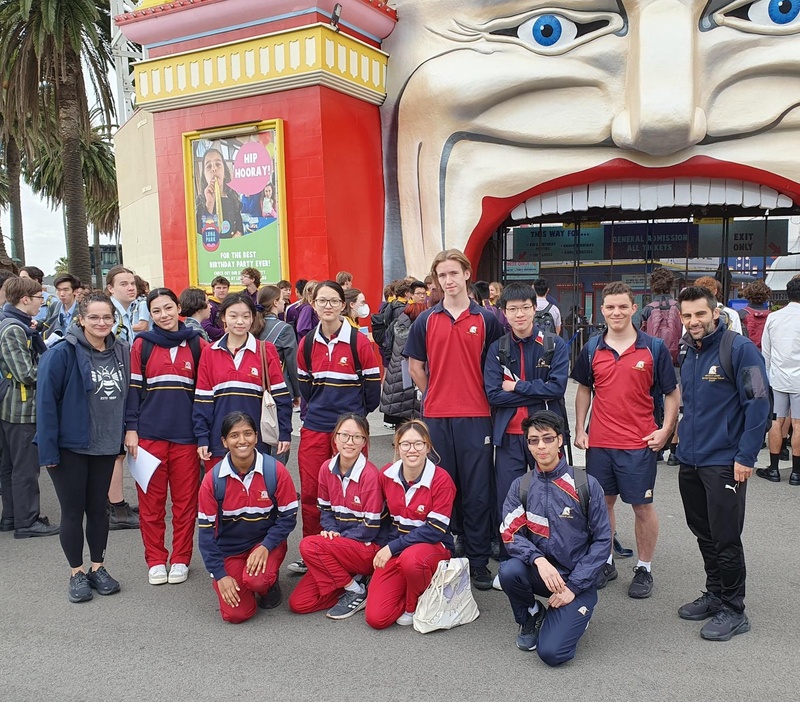Physics is based on observations, experiments, measurements and mathematical analysis with the purpose of finding quantitative explanations for phenomena occurring from the subatomic scale through to the planets, solar systems and galaxies in the Universe. Whilst many scientific understandings in Physics have stood the test of time, many other areas continue to evolve. In undertaking this study, students develop their understanding of the role of careful and systematic experimentation, and modelling, in the development of theories and laws. They undertake practical activities and apply physics principles to explain and quantify both natural and constructed phenomena.
How is energy useful to society?
In Unit 1, students examine some of the fundamental ideas and models used by physicists in an attempt to understand and explain energy. Models used to understand light, thermal energy, radioactivity, nuclear processes and electricity are explored. Students apply these physics ideas to contemporary societal issues: communication, climate change and global warming, medical treatment, electrical home safety and Australian energy needs.
Students analyse, interpret and evaluate the performance of the business using financial and non-financial information. They use these
evaluations to make recommendations regarding the suitability of a business as an investment.
Area of Study 1: The role of accounting
Area of Study 2: Recording financial data and reporting accounting information for a service business.
How does physics help us to understand the world?
In Unit 2, students explore the power of experiments in developing models and theories. They investigate a variety of phenomena by making their own observations and generating questions, which in turn lead to experiments.
In Area of Study 1, students investigate the ways in which forces are involved both in moving objects and in keeping objects stationary and apply these concepts to a chosen case study of motion.
In Area of Study 2, students choose one of eighteen options related to climate science, nuclear energy, flight, structural engineering, biomechanics, medical physics, bioelectricity, optics, photography, music, sports science, electronics, astrophysics, astrobiology, Australian traditional artefacts and techniques, particle physics, cosmology and local physics research. The selection of an option enables students to pursue an area of interest through an investigation and using physics to justify a stance, response or solution to a contemporary societal issue or application related to the option.
A student-adapted or student-designed scientific investigation is undertaken in Area of Study 3. The investigation involves the generation of primary data and draws on the key science skills and key knowledge from Area of Study 1 and/or Area of Study 2
How do fields explain motion and electricity?
In Unit 3, students use Newton’s laws to investigate motion in one and two dimensions. They explore the concept of the field as a model used by physicists to explain observations of motion of objects not in apparent contact. Students compare and contrast three fundamental fields – gravitational, magnetic and electric – and how they relate to one another. They consider the importance of the field to the motion of particles within the field. Students examine the production of electricity and its delivery to homes. They explore fields in relation to the transmission of electricity over large distances and in the design and operation of particle accelerators.
A student-designed practical investigation involving the generation of primary data and including one continuous, independent variable related to fields, motion or light is undertaken either in Unit 3 or Unit 4, or across both Units 3 and 4, and is assessed in Unit 4, Outcome 2.
How have creative ideas and investigation revolutionised thinking in physics?
In Unit 4, students explore some monumental changes in thinking in Physics that have changed the course of how physicists understand and investigate the Universe. They examine the limitations of the wave model in describing light behaviour and use a particle model to better explain some observations of light. Matter, that was once explained using a particle model, is re-imagined using a wave model. Students are challenged to think beyond how they experience the physical world of their everyday lives to thinking from a new perspective, as they imagine the relativistic world of length contraction and time dilation when motion approaches the speed of light. They are invited to wonder about how Einstein’s revolutionary thinking allowed the development of modern-day devices such as the GPS.
A student-designed practical investigation involving the generation of primary data and including one continuous, independent variable related to fields, motion or light is undertaken either in Unit 3 or Unit 4, or across both Units 3 and 4, and is assessed in Unit 4, Outcome 2.

Student Point of View
What kind of learner is best suited to study this subject?
Curious, problem solver, inquirer
What key skills are required for success?
Analysis, logic, critical thinking
What are three most engaging topics studied?
Origins of the universe and particle theory
Einstein’s relativity
Motion
What are the learning activities in this subject like?
Concept modelling, practical investigations, problem solving
What advice would you give to a student about to embark on this subject?
The concepts are sometimes a little outside the box so you need to enter physics ready to have your ideas challenged. Be ready to be a risk taker in your learning and be open to seeing the universe in a whole new way.
Prerequisites
It is strongly recommended that students intending to complete Units 3 and 4 Physics complete Units 1 and 2 first. The course content studied in units 1 and 2 provides background knowledge for Units 3 and 4. Motion and electricity from the Unit 1 and 2 courses are heavily relied upon in Units 3 and 4.
Studies in VCE PHYSICS can lead to study and career options in the following areas:
Architect
Biophysicist
Electrical Engineer
Environmental scientist
Geologist
Civil Engineer
Mine surveyor
Patent examiner
Pilot




